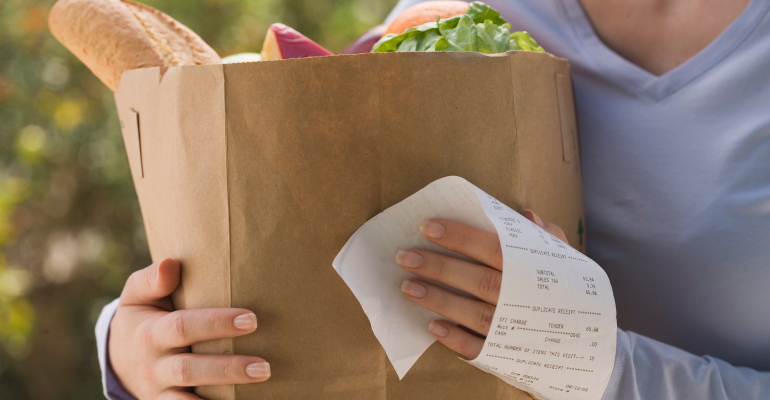TOP TAKEAWAYS
- 94% of consumers report concern with the cost of food inflation
- Food inflation is high, still up an average of 20% from 2019
- 86% of meals are sourced from home and 14% from food service as of the close of 2022, still up from the pre-pandemic 84% home/16% food service split
While food inflation is still high (up an average of 20% from 2019), it isn’t translating to consumers eating less, but rather more and more are continuing to trade down and buy more private label products to keep their costs down, according to a new report from Circana.
Consumers, especially those at poverty levels, have been hit especially hard by inflation this past year. In March, the federal government eliminated extra Supplemental Nutrition Assistance Program (SNAP) benefits nationwide, a benefit that had been left over from increased pandemic assistance.
In April, households sourcing meals from food banks then increased by 15% vs. the prior year, according to the Census Bureau.
New data also indicates that one-in-five consumers say they are now starting to pay for groceries in installments or payment plans in order to be able to afford essentials.
Still, the Circana report shows that over the past year, 86% of meals were sourced from home and 14% from food service, which is still up from the pre-pandemic 84% home/16% food service split. Additionally, the data says that meals at home are less expensive, with food service meals costing more than four times what at-home meals do.
While it may look like declining volume sales might mean less consumption, the report shows that consumers are not eating less. And the volume shift is not a one-for-one exchange between retail and food service. While retail unit volumes are declining, they remain higher than pre-pandemic, and food service volume is increasing due to pockets of robust growth, while other areas lag behind.
Instead, the report findings show that 31% of shoppers are switching to a lower-cost brand more often, with shoppers additionally looking for more coupons (either paper or online), more often.
Along the same lines, FMI just released its private label spending report which contains similar results, with some 96% of grocery shoppers purchase store brands at least occasionally; 46% purchase private brands most or all of the time; and an overwhelming 90% of shoppers said they are likely to continue buying private brands.
The Circana report also showed that consumers are looking for more sales (53%) followed by cutting back on non-essentials (46%). In addition, they are more focused on less waste; 41% are more conscious of using fresh foods before they go bad, and an additional 39% use leftovers more.
Despite lower unit sales, the average U.S. household makes +10 more trips annually to retail for food and beverage than two years ago, but again total basket spend is down at only +0.5% vs. July 2022.





